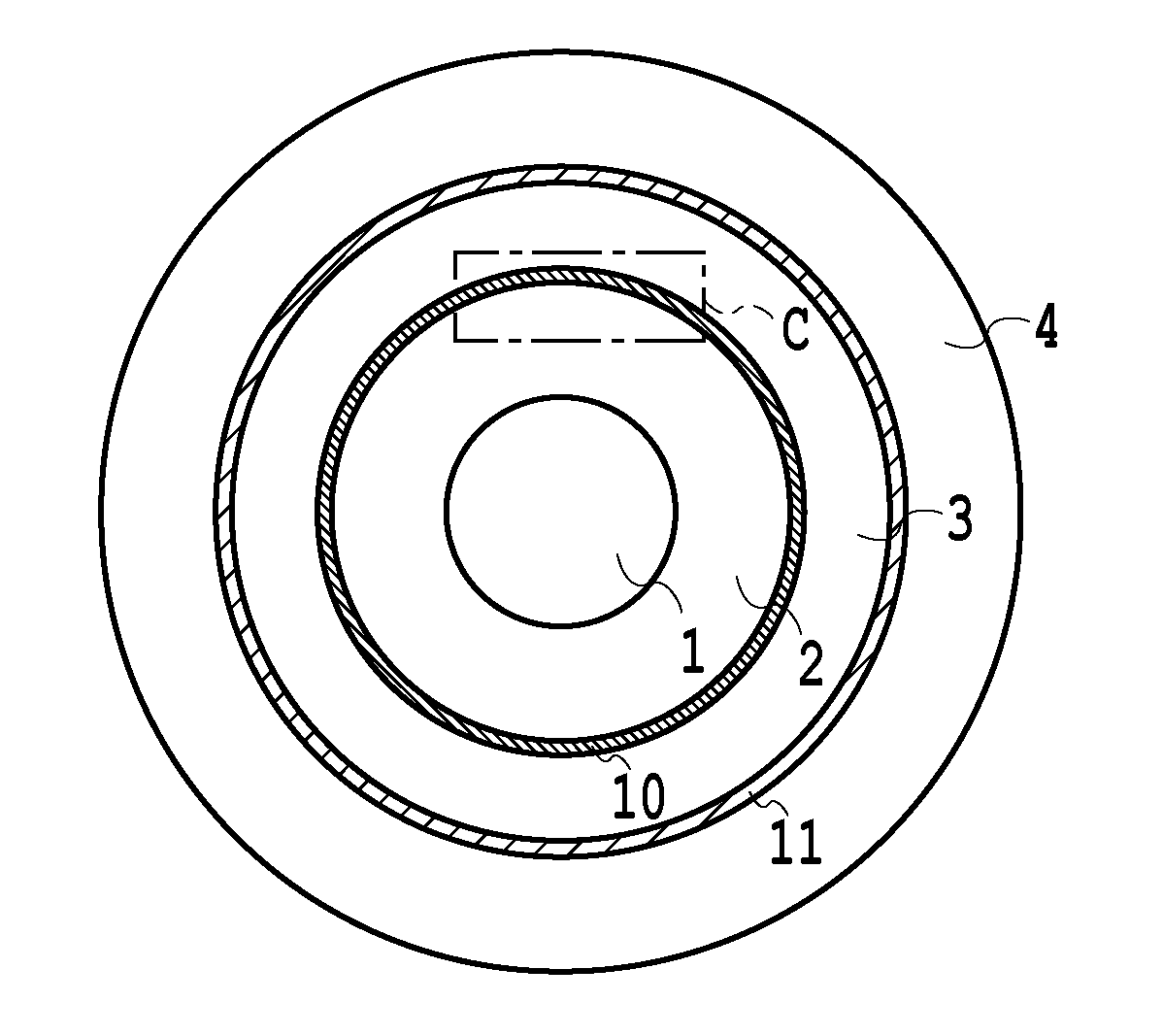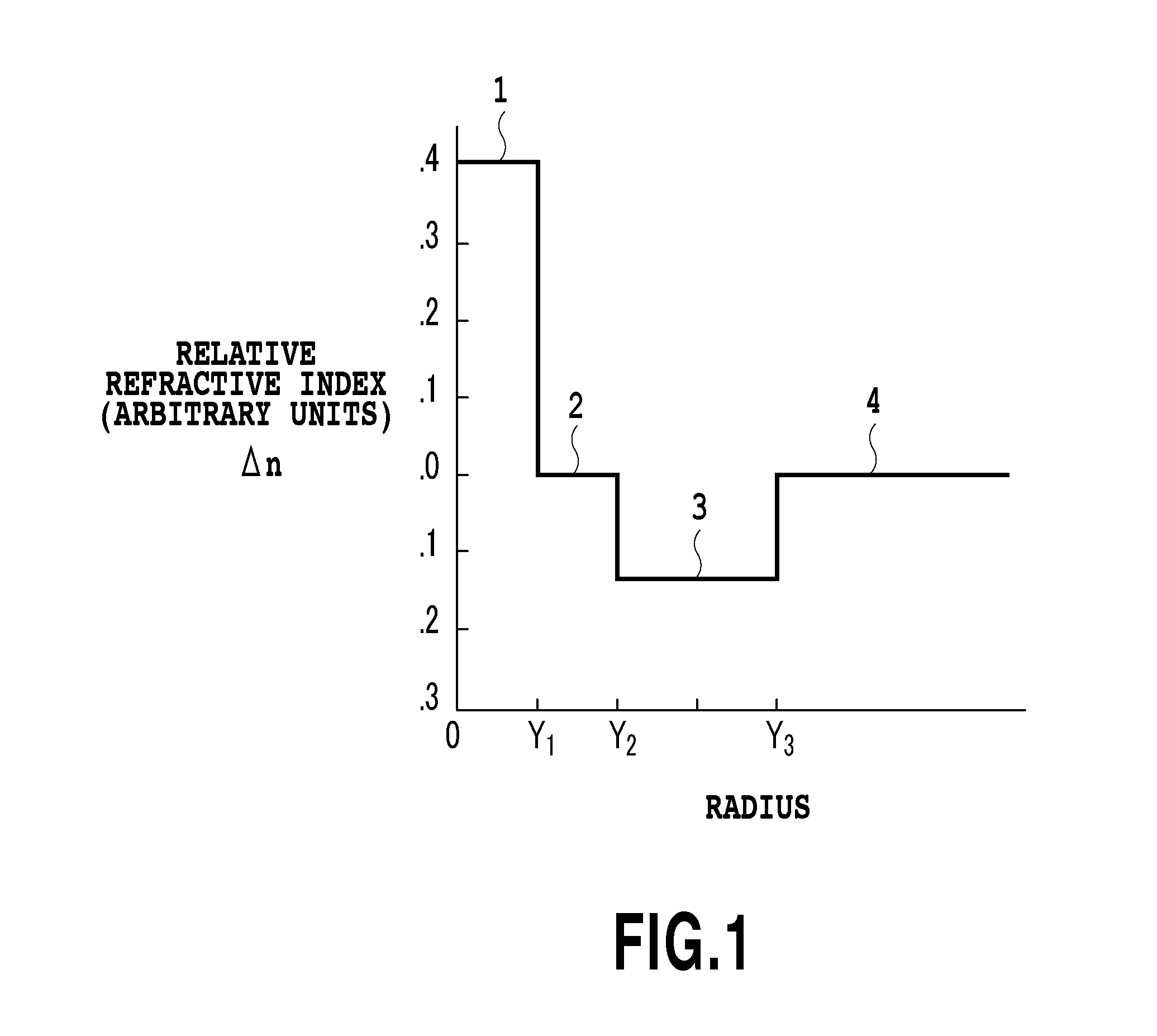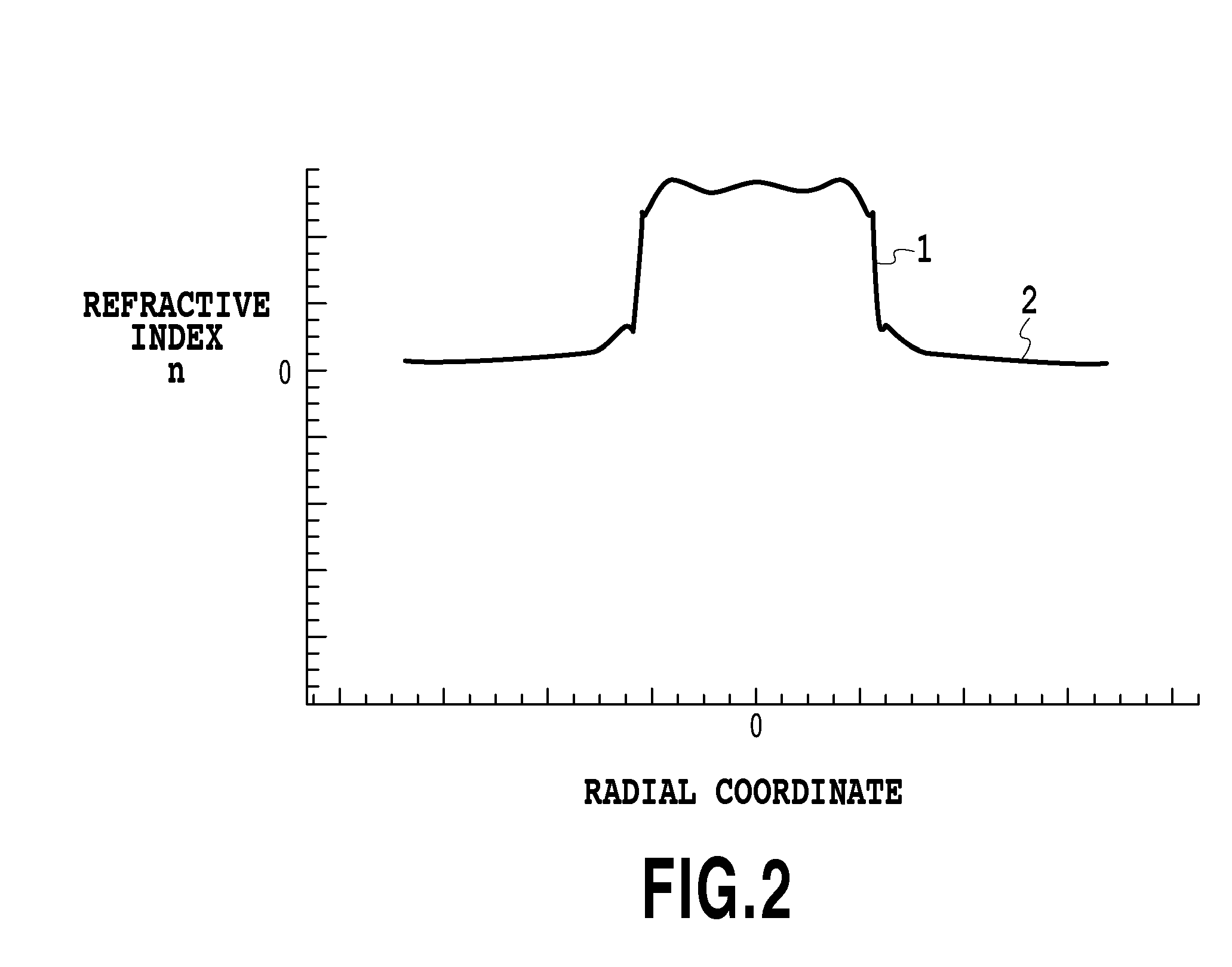Optical Fiber, Optical Fiber Preform and Method of Fabricating Same
- Summary
- Abstract
- Description
- Claims
- Application Information
AI Technical Summary
Benefits of technology
Problems solved by technology
Method used
Image
Examples
example 1
[0059]A core member was fabricated by the above method. FIG. 8A shows a refractive index profile of the core member. In the core member, a relative refractive index difference A1 of the core region is 0.38%, and a relative refractive index difference A2 of the inner cladding region is substantially zero. In addition, the core member was heat-treated in a chlorinated gas atmosphere, so that about 0.1% to 0.2% of residual chloride as unintentional impurities remained in the core member.
[0060]Next, a trench region was deposited on the outer surface of the core member by the OVPO method. The trench region was formed by stacking about two hundred fluorine-contained silica-glass layers. Each of the fluorine-contained silica-glass layers has a thickness of about 0.02 mm and is formed by depositing 0.02 mm thick fluorine-contained silica-glass particles on the core member while rotating the core member about a center axis of the core region. The fluorine-contained silica-glass particles wer...
example 2
[0070]A core member was fabricated by the same method as Example 1. The core member has a refractive index profile shown in FIG. 8 and the same characteristics as the optical fiber of Example 1.
[0071]Next, a porous layer for a trench region was deposited on the outer surface of the core member by the OVPO method. The trench region was formed by stacking about two hundred porous glass layers which is formed of silica-glass. Each of the porous glass layers has a thickness of about 0.04 mm and is formed by depositing 0.04 mm thick silica-glass particles on the core member while rotating the core member about a center axis of the core region. The silica-glass particles were synthesized by supplying a silicon tetrachloride (SiCl4) gas to an oxyhydrogen gas flame. An initial forty layers of the porous glass layers were deposited while a flow rate of hydrogen gas supplied to the oxyhydrogen gas was increased by a predetermined amount layer by layer. Thereby, a density of the initial forty ...
PUM
| Property | Measurement | Unit |
|---|---|---|
| Temperature | aaaaa | aaaaa |
| Length | aaaaa | aaaaa |
| Length | aaaaa | aaaaa |
Abstract
Description
Claims
Application Information
 Login to View More
Login to View More - R&D
- Intellectual Property
- Life Sciences
- Materials
- Tech Scout
- Unparalleled Data Quality
- Higher Quality Content
- 60% Fewer Hallucinations
Browse by: Latest US Patents, China's latest patents, Technical Efficacy Thesaurus, Application Domain, Technology Topic, Popular Technical Reports.
© 2025 PatSnap. All rights reserved.Legal|Privacy policy|Modern Slavery Act Transparency Statement|Sitemap|About US| Contact US: help@patsnap.com



